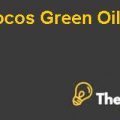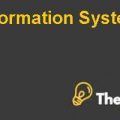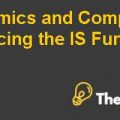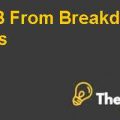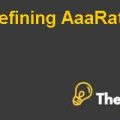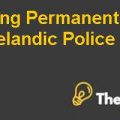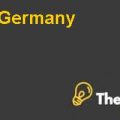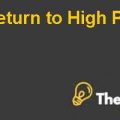
Relevant Facts detected
Greenhill and Co are facilitating the bid of Burger king and Paul Walsh is expecting a bid ranging from $1.8 billion to $2.7 billion. Paul is also willing to accept a bid that is in the range between the above specified prices; however, he is expecting a healthy bid from the acquirer. Paul is waiting for the call to get the final 4 bids that will decide the final bid for The Burger King.
Burger king is a brand of Diageo, a leading company with many of the foods and drinks brands that consist of; Johnnie Walker, Gordon’s, Smirnoff, Bailey’s, Pillsbury, Haagen Daz and Burger King. The company has $38 billion total capitalization. The company started its operations in December 1997 and achieved the success in the short time span. It is operating in 140 counties of the World and now it is one of the leading consumer products company in the World.
After the formation of Diageo in 1997, Burger King was facing a problem of declining key metrics, including customer visiting and same-store sales. Since the incorporation of Burger King in 1957, it grew due to the franchising of its operations. It has around 11,437 restaurants in the World. From these numbers of restaurants it has owned only 1,051 restaurants and remaining 10,386 are franchised. In QSR, typical franchises have to pay $50,000 as an upfront payment that is one time fees to get the license and a royalty and advertisement from the gross sales. Burger King charges a fee of the total 8.5 % of the gross sales that are also in line with its competitors. The majority of its franchises are the part of National Franchising Association (NFA) that is a franchise advisory council.
In April 2000, NFA tried to buy Burger King to run its free standing operations, but the offer was rejected by Diageo.
In April 2001, John Dasburg had been appointed as a seventh CEO of the Burger King division in last thirteen years. He had a track record of turnarounds and prior expertise related to the service business. He had served as a CEO of Northwest Airlines for ten years.
Identified problems (at least 3)
The first problem is that Burger King is facing a high competition from McDonald’s, Wendy, Pizza Hut, Taco Bell and other that are operating under fast food industry. Burger King generated only 18.4% of the sales of the total market by US whereas; it is running 22.6% of the restaurants in US.
The second issue is that the company’s innovative products provide sales for the short term but not the long term. The discount offers also cannot work for it. The company has, however, achieved a growth in premium drinks by 14% and packed foods division has also grown by 5% but the profits have declined by 12%.
The third problem is the fair price of the company, the company has received many bids, but it has to decide which bid to accept and which to reject on the basis of fair price of the company. It is necessary to get the fair price of the company first, and then decide which arrangement to accept to sell the business.
The fourth problem is to decide which option to select, whether to issue IPO or to sell Burger King to a private equity firm or a corporation.
Alternatives of solution (at least 3)
The company is facing a decline in its sales and the only solution to increase the demand for its product is to offer an innovative product not discounted products. The strategy can be to follow the competitors as they must see which of the product is successful in the market then the company must copy that product. The other option is to go for a survey and then choose the product innovation according to the customer demand (Tice, 2011).The Burger King Case Solution
The company’s gross profit is declining due to the offer of the $0.99 deal that cannot generate sufficient profits for the company. The company must not focus on discount but to focus on innovative products that can be sold at a premium price.
The other solution is to merge with a large company that is operating under the same industry and that has resources and efficiency to run the operations of Burger King successfully.
The fair price of the company can be accessed through free cash flow valuation model. The fair price of the company is $1.748 billion (Appendix 2)......................
This is just a sample partial case solution. Please place the order on the website to order your own originally done case solution.

